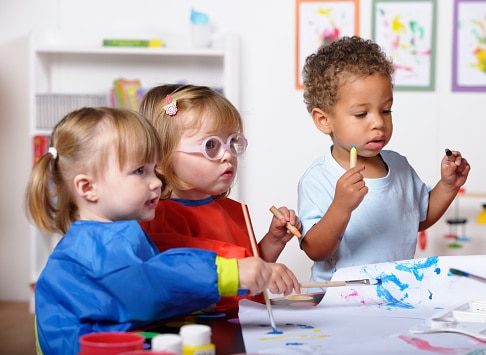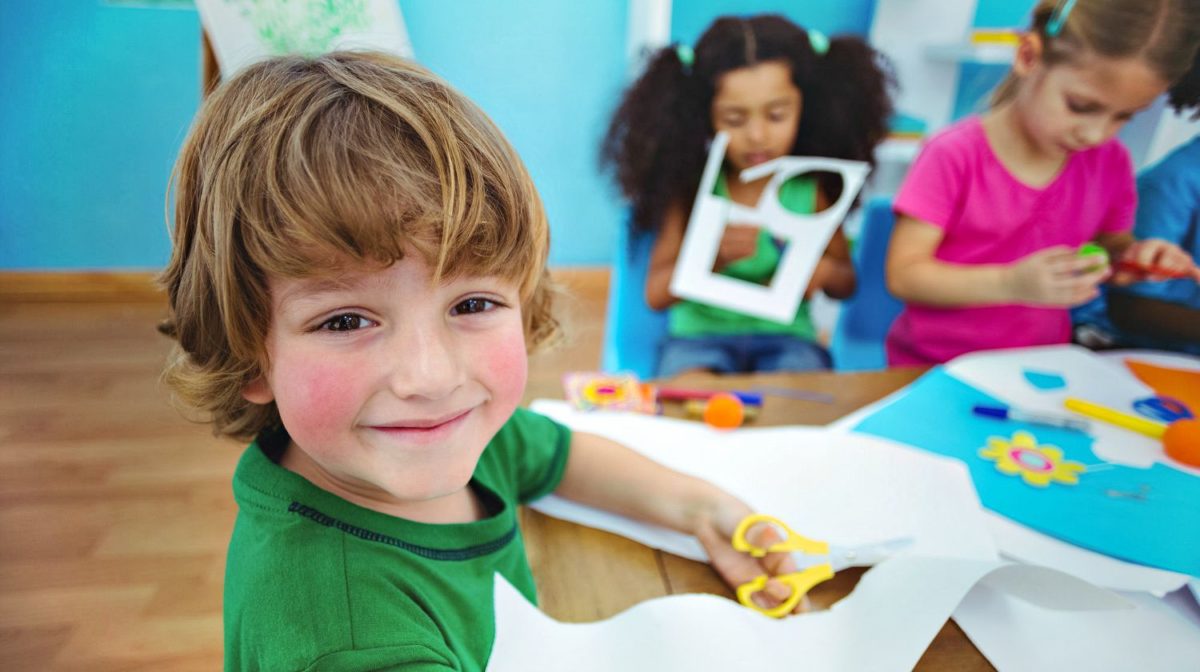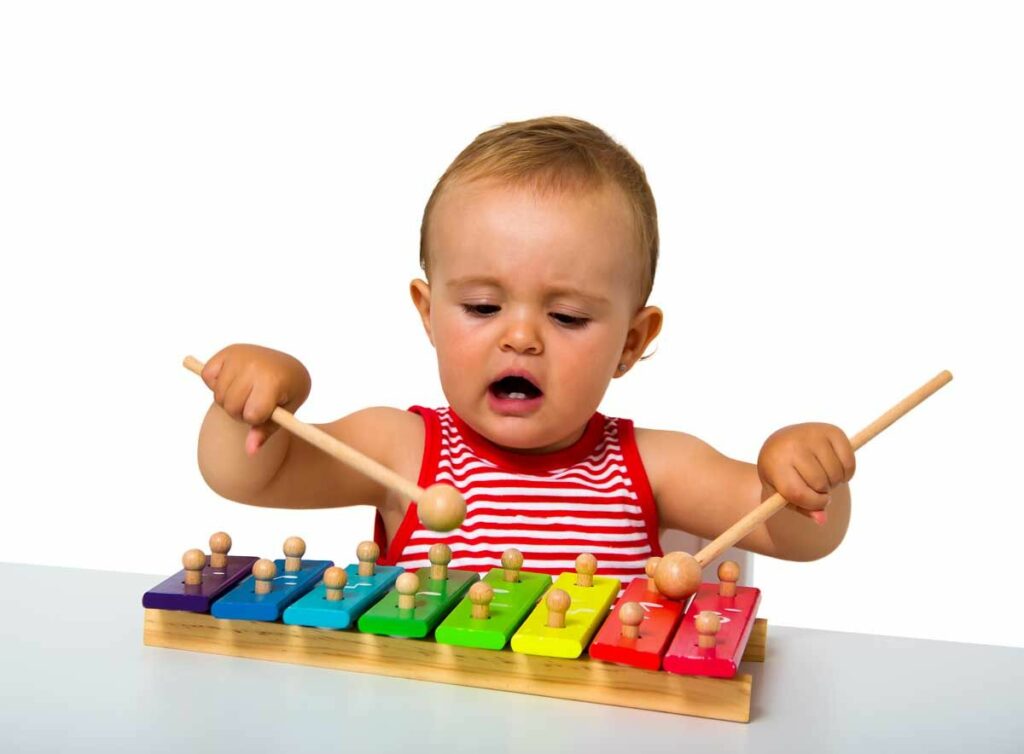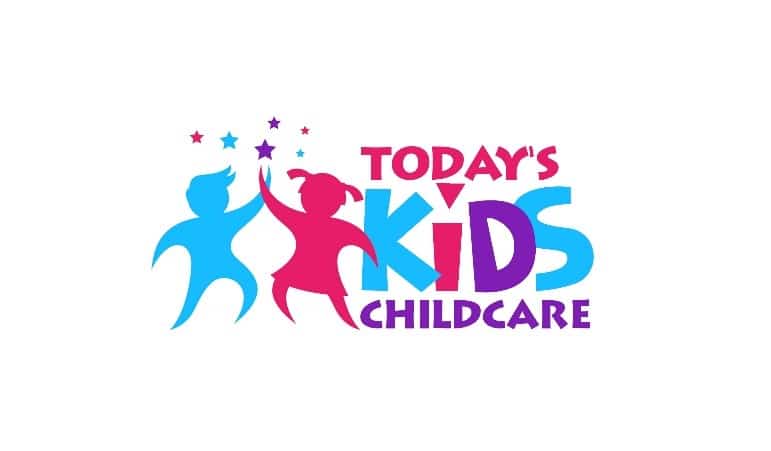DIY Fun: Creative Craft Ideas for Toddlers
Craft activities offer toddlers more than just a creative outlet; they provide valuable opportunities for sensory exploration, fine motor skill development, and self-expression. Engaging in DIY crafts with toddlers not only sparks their imagination but also fosters their cognitive and emotional growth.
In this blog post, we’ll explore some delightful and easy-to-make craft ideas that will keep your little ones entertained and engaged for hours of creative fun.
DIY Fun: Creative Craft Ideas for Toddlers
1. Finger Painting Fun
- Finger painting is a classic craft activity that toddlers love. Set up a designated painting area with large sheets of paper and non-toxic finger paints in vibrant colors. Let your toddler explore their creativity by dipping their fingers into the paint and creating colorful masterpieces with their hands.
2. Sensory Play with Playdough
- Homemade playdough provides endless possibilities for sensory exploration and creative play. Mix together flour, salt, water, and food coloring to create a soft and pliable dough. Set out various tools and accessories, such as cookie cutters, rolling pins, and plastic utensils, for your toddler to manipulate and shape the dough to their heart’s content.
3. Nature Collage
- Take a nature walk with your toddler to collect leaves, twigs, flowers, and other natural materials. Back at home, provide a large piece of cardboard or paper as a base and let your toddler arrange and glue the natural treasures onto the surface to create a beautiful nature collage.

4. Cardboard Box Creations
- Turn empty cardboard boxes into imaginative play spaces for your toddler. Provide markers, stickers, and paint for decorating, and then let your toddler’s imagination run wild as they transform the boxes into cars, castles, rockets, or whatever else their creativity conjures up.
5. Sticker Art
- Sticker art is a simple yet engaging craft activity for toddlers. Give your toddler a sheet of stickers and a blank piece of paper, and let them stick the stickers onto the paper to create their own unique designs. Encourage them to experiment with different colors, shapes, and patterns.
6. Pasta Jewelry
- Pasta jewelry is a fun and easy craft activity that toddlers can enjoy. Provide cooked pasta in various shapes, sizes, and colors, along with string or yarn. Let your toddler thread the pasta onto the string to create colorful and unique pasta necklaces or bracelets.
7. Sponge Painting
- Cut ordinary kitchen sponges into fun shapes, such as stars, hearts, or animals. Dip the sponge shapes into washable paint and let your toddler stamp them onto paper to create colorful and textured paintings.

8. Bubble Wrap Printing
- Bubble wrap printing is a simple and mess-free craft activity that toddlers will love. Dip a piece of bubble wrap into washable paint and then press it onto paper to create colorful bubble patterns. Encourage your toddler to experiment with different colors and printing techniques.
9. Paper Plate Masks
- Transform paper plates into whimsical masks with this easy craft activity. Provide paper plates, markers, glue, and craft materials such as feathers, pom-poms, and googly eyes. Let your toddler decorate the paper plates and then help them cut out eye holes and attach elastic bands to create wearable masks.
10. Handprint Art
- Handprint art is a cherished keepsake that captures your toddler’s handprints in colorful designs. Use washable paint to coat your toddler’s hands and then press them onto paper to create handprint flowers, animals, or other designs. Encourage your toddler to embellish the handprints with markers or stickers.
Craft activities offer toddlers a world of creative possibilities and opportunities for hands-on learning and exploration. With these DIY craft ideas, you can provide your little one with hours of creative fun while fostering their cognitive, sensory, and fine motor skills.
So gather your craft supplies, unleash your toddler’s imagination, and get ready to embark on a colorful and creative crafting adventure together!
Supporting Working Parents: The Convenience and Flexibility of Childcare Centers
For working parents, balancing professional responsibilities with the care and nurturing of their children can be a challenging juggle. Childcare centers offer a lifeline, providing a safe, nurturing environment where children can learn and grow while parents pursue their careers.
In this blog post, we’ll explore the convenience and flexibility of childcare centers and how they support working parents in managing the demands of work and family life.
The Convenience of Childcare Centers
- Structured Care Options
- Childcare centers offer structured care options tailored to the needs of working parents. From full-day programs to part-time care and after-school programs, parents can choose a schedule that aligns with their work hours and commitments.
- Safe and Supervised Environment
- Childcare centers provide a safe and supervised environment where children receive quality care and attention from trained professionals. Parents can have peace of mind knowing that their children are in a secure setting while they are at work.
- Professional Staff
- Childcare centers employ qualified and experienced staff who are trained in early childhood education and development. These professionals provide age-appropriate activities, supervision, and support, ensuring that children receive high-quality care and enrichment.

Flexibility for Working Parents
- Extended Hours
- Many childcare centers offer extended hours, accommodating the schedules of working parents who may have early mornings or late evenings due to their job requirements. Flexible drop-off and pick-up times provide convenience and peace of mind for busy parents.
- Part-Time Options
- Childcare centers often offer part-time enrollment options for parents who work flexible or non-traditional schedules. This flexibility allows parents to customize their childcare arrangements based on their work hours and family needs.
- Summer and Holiday Programs
- During school breaks, summer vacations, and holidays, childcare centers may offer special programs and camps to support working parents. These programs provide continuity of care and enrichment activities for children during these periods.

Additional Benefits for Working Families
- Educational Enrichment
- Childcare centers provide educational enrichment opportunities that support children’s cognitive, social, and emotional development. From age-appropriate curriculum to stimulating activities and play-based learning, children receive a well-rounded educational experience in childcare settings.
- Community and Support
- Childcare centers foster a sense of community and support among parents, offering networking opportunities, parent education workshops, and social events. Parents can connect with other families, share experiences, and build a support network within the childcare community.
- Parental Peace of Mind
- By entrusting their children to reputable childcare centers, working parents gain peace of mind knowing that their children are well cared for and supported in their development. This confidence allows parents to focus on their work responsibilities with greater concentration and efficiency.
Childcare centers play a vital role in supporting working parents by providing convenient and flexible care options for their children. From structured programs to extended hours and part-time enrollment, childcare centers offer solutions that align with the diverse needs of working families.
By offering a safe, nurturing environment and educational enrichment opportunities, childcare centers empower parents to pursue their careers while ensuring that their children receive quality care and support. As a cornerstone of support for working families, childcare centers contribute to the well-being and success of both parents and children in today’s busy world.
Stimulating Early Minds: Educational Toys for Infants and Toddlers
Play is a vital aspect of a child’s development, serving as a gateway to exploration, learning, and creativity. Educational toys play a crucial role in fostering cognitive, motor, and sensory skills in infants and toddlers.
In this blog post, we’ll explore some examples of educational toys for this age group and discuss their benefits in promoting early learning and development.
Stimulating Early Minds: Educational Toys for Infants and Toddlers
1. Soft Blocks
- Benefits: Soft blocks encourage sensory exploration, hand-eye coordination, and spatial awareness. Infants can grasp, stack, and knock down blocks, fostering motor skills and problem-solving abilities.
2. Activity Gyms
- Benefits: Activity gyms feature colorful toys, mirrors, and textures to stimulate infants’ senses and encourage reaching, kicking, and grasping. They promote visual tracking, gross motor skills, and cognitive development.

3. Shape Sorters
- Benefits: Shape sorters help toddlers develop fine motor skills, hand-eye coordination, and problem-solving abilities. Sorting shapes into corresponding holes enhances cognitive skills and introduces concepts like shapes and colors.
4. Stacking Rings
- Benefits: Stacking rings promote hand-eye coordination, spatial awareness, and problem-solving skills. Toddlers learn to stack rings in size order, developing early math concepts and fine motor skills.
5. Musical Instruments
- Benefits: Musical instruments, such as shakers, tambourines, and xylophones, encourage sensory exploration, rhythm recognition, and auditory discrimination. They foster creativity, self-expression, and social interaction.

6. Puzzles
- Benefits: Simple puzzles with large, chunky pieces help toddlers develop problem-solving skills, spatial reasoning, and hand-eye coordination. Matching pieces to complete a picture or shape promotes cognitive development and perseverance.
7. Nesting and Stacking Toys
- Benefits: Nesting and stacking toys offer opportunities for exploration, fine motor skill development, and spatial reasoning. Infants and toddlers can stack cups, rings, or nesting blocks, fostering creativity and imagination.
8. Activity Tables
- Benefits: Activity tables feature interactive elements such as buttons, levers, and spinners to engage toddlers in sensory exploration and cause-and-effect learning. They promote fine motor skills, hand-eye coordination, and cognitive development.
9. Books and Board Books
- Benefits: Books and board books introduce infants and toddlers to language, vocabulary, and early literacy skills. Interactive books with textures, flaps, and sound effects enhance sensory exploration and language development.

10. Play Dough and Clay
- Benefits: Play dough and clay offer tactile stimulation and encourage creativity, imagination, and fine motor skills. Toddlers can squish, mold, and shape dough, promoting sensory exploration and self-expression.
Educational toys play a pivotal role in stimulating cognitive, motor, and sensory development in infants and toddlers. By providing age-appropriate toys that encourage exploration, creativity, and problem-solving, parents and caregivers can support their child’s early learning journey.
Whether it’s stacking blocks, exploring textures, or making music, each toy offers unique benefits that contribute to holistic development. Remember to choose toys that are safe, durable, and engaging, and most importantly, allow plenty of time for unstructured play and exploration to nurture your child’s natural curiosity and imagination.
Navigating Tough Conversations: A Parent’s Guide to Approaching Difficult Topics with Children
Parenting is a journey filled with joy, laughter, and challenges. One of the inevitable challenges involves broaching difficult topics with your children. Whether it’s discussing challenging social issues, addressing personal struggles, or explaining life changes, effective communication is key.
In this blog post, we’ll explore valuable tips to help parents approach difficult topics with sensitivity, openness, and the intention to foster understanding.
1. Create a Safe and Open Environment
- Establish Trust: Cultivate a safe and open space where your child feels comfortable sharing their thoughts and concerns without fear of judgment.
- Why It Works: A secure environment encourages open communication and makes your child more receptive to discussing difficult topics.
2. Choose the Right Time and Setting
- Timing is Crucial: Select an appropriate time and setting for the conversation. Avoid discussing sensitive topics in the midst of other activities or during a rushed moment.
- Why It Works: The right timing ensures that both you and your child can dedicate the necessary time and attention to the conversation.
3. Be Prepared and Informed
- Educate Yourself: Before approaching a difficult topic, gather relevant information and educate yourself on the subject. This ensures that your conversation is informed and accurate.
- Why It Works: Being well-informed enables you to answer your child’s questions confidently and provide accurate guidance.

4. Use Age-Appropriate Language
- Tailor Your Approach: Adjust your language and explanations to match your child’s age and understanding. Use simple, age-appropriate terms to convey complex concepts.
- Why It Works: Age-appropriate language ensures that your child comprehends the information without feeling overwhelmed.
5. Be Honest and Transparent
- Encourage Openness: Be honest with your child about the difficult topic. Avoid sugarcoating, but maintain a level of transparency that suits your child’s age and emotional readiness.
- Why It Works: Honesty builds trust and encourages your child to come to you with their concerns in the future.
6. Listen Actively
- Practice Active Listening: Give your child your full attention during the conversation. Listen actively, validate their feelings, and ask follow-up questions to ensure understanding.
- Why It Works: Active listening demonstrates empathy and shows your child that their perspective is valued.
7. Use Visual Aids or Metaphors
- Simplify Complex Concepts: For particularly complex topics, consider using visual aids or metaphors to simplify the information. This makes it more accessible for your child.
- Why It Works: Visual aids and metaphors help your child grasp difficult concepts by providing relatable imagery.

8. Encourage Questions and Feedback
- Create a Dialogue: Encourage your child to ask questions and share their thoughts. Be open to their feedback and engage in a two-way conversation.
- Why It Works: A dialogue allows your child to process information actively and helps strengthen your parent-child bond.
9. Respect Their Emotional Responses
- Acknowledge Emotions: Understand that difficult conversations may evoke strong emotions in your child. Respect their feelings and provide comfort and reassurance.
- Why It Works: Acknowledging emotions fosters emotional intelligence and helps your child feel supported during challenging discussions.
10. Follow Up and Provide Support
- Check-In Regularly: After the initial conversation, follow up with your child regularly. Offer ongoing support and encourage them to share any new thoughts or concerns.
- Why It Works: Regular check-ins maintain an open line of communication and demonstrate your ongoing commitment to supporting your child.
Approaching difficult topics with your children is an integral part of parenting, and it requires patience, empathy, and effective communication. By creating a safe and open environment, using age-appropriate language, and maintaining a commitment to honesty and transparency, you lay the foundation for constructive conversations.
Remember that every child is unique, so adapt these tips to suit your child’s individual needs and temperament. With these strategies, you’ll navigate challenging discussions with sensitivity, fostering a trusting and communicative relationship with your child.
Sweet Dreams: Navigating Normal Sleep Patterns for Children Across Age Groups
As parents, caregivers, and educators, understanding the intricacies of children’s sleep patterns is crucial for fostering healthy development and overall well-being. Sleep is not just a necessity; it’s a dynamic process that evolves as children grow.
This blog post delves into the normal sleep patterns of children in different age groups, offering insights to help navigate the journey from the cradle to adolescence.
Sweet Dreams: Navigating Normal Sleep Patterns for Children Across Age Groups
Infancy (0-12 months): The Dance of the Newborn Sleep Cycle
In the first few months of life, newborns experience a unique sleep cycle characterized by short durations of sleep and frequent waking. As infants mature, their sleep patterns gradually consolidate, and they begin to distinguish between day and night.
By the end of the first year, many infants will establish a more predictable sleep routine, typically involving longer nighttime sleep and naps during the day.
Toddlerhood (1-3 years): Transitioning to a Regular Sleep Schedule
Toddlerhood marks a period of transition as children establish more regular sleep schedules. Most toddlers require about 11 to 14 hours of sleep per day, including nighttime sleep and one or two naps.
Consistency in bedtime routines and creating a conducive sleep environment play a crucial role in promoting healthy sleep habits during this stage.
Preschool (3-5 years): Embracing the Power of Naps and Nighttime Sleep
Preschoolers typically need 10 to 13 hours of sleep per day. While many children may start to outgrow naps during this period, others may benefit from a short nap to recharge their energy.
Establishing a consistent bedtime routine, limiting screen time before bedtime, and ensuring a comfortable sleep environment contribute to fostering a positive sleep culture.
Elementary School (6-12 years): The Importance of Consistent Sleep Habits
School-age children generally need 9 to 12 hours of sleep per night. With the demands of school and extracurricular activities, maintaining a consistent sleep schedule becomes crucial.
Balancing screen time, providing a relaxing pre-bedtime routine, and ensuring a comfortable sleep

environment help optimize the sleep experience for children in this age group.
Adolescence (13-18 years): Navigating Changing Sleep Patterns
Adolescents experience a shift in their circadian rhythms, leading to later bedtimes and a need for more sleep. Despite these changes, teenagers still require 8 to 10 hours of sleep per night.
Encouraging a healthy sleep routine, managing stress, and addressing potential sleep disorders become essential for supporting optimal sleep patterns during this transformative stage.
Understanding the normal sleep patterns of children in different age groups empowers parents and caregivers to provide the support necessary for healthy development. From the dance of the newborn sleep cycle to navigating the changing sleep patterns of adolescents, each stage presents its unique challenges and opportunities.
By prioritizing consistent sleep habits, creating a conducive sleep environment, and addressing individual needs, we can contribute to a foundation of well-rested, thriving children, setting the stage for a lifetime of healthy sleep habits. Sweet dreams await as we embark on this journey of nurturing a good night’s sleep for our little ones.
Unveiling the Marvels of Social Development in Young Children: A Journey of Growth
Witnessing a child’s social development is like observing a captivating journey filled with discovery, connection, and self-awareness. From the early stages of infancy to the more complex interactions of preschool years, young children navigate through various milestones in their social development.
This blog post aims to unveil the typical steps of social development in young children, shedding light on the fascinating progression that shapes their relationships and understanding of the world.
Unveiling the Marvels of Social Development in Young Children: A Journey of Growth
Infancy (0-2 years): Building Trust and Attachment
In the earliest stage of life, infants develop their social skills through bonding with primary caregivers. Responding to a baby’s needs, establishing eye contact, and engaging in nurturing interactions lay the foundation for trust and emotional security.
The establishment of a secure attachment paves the way for healthy social relationships later in life.
Toddlerhood (2-3 years): Exploring Independence and Basic Social Skills
As toddlers start to explore the world around them, they develop basic social skills. Simple interactions like sharing toys, taking turns, and engaging in parallel play become more common.
Toddlers begin to express their desires and emotions verbally and non-verbally, learning to navigate the nuances of social cues.
Preschool Years (3-6 years): Forming Friendships and Developing Empathy
Preschool marks a crucial period for social development, as children transition from parallel play to more interactive and cooperative play. Friendships become increasingly important, and children start to grasp the concept of empathy—understanding and sharing the feelings of others.
Group activities, such as storytelling and imaginative play, foster social skills and communication.
Early School Years (6-8 years): Refining Social Skills and Understanding Social Rules

Peer relationships become central to their social world, influencing their self-esteem and sense of belonging.
Middle Childhood (8-12 years): Building Identity and Expanding Social Circles
As children enter middle childhood, they become more self-aware and begin to define their identity within social contexts. Friendships continue to evolve, and children start to form more lasting and complex relationships.
Social interests and activities become increasingly diverse, contributing to the development of a well-rounded social identity.
Adolescence (12-18 years): Exploring Independence and Identity
Adolescence marks a period of heightened social development as teenagers seek greater independence from their families. Peer relationships become even more influential, and adolescents navigate the challenges of forming deeper connections and understanding complex social dynamics.
The development of a strong sense of identity is a key focus during this stage.
Understanding the typical steps of social development in young children provides valuable insights for parents, caregivers, and educators. Recognizing and supporting these milestones allows for a more informed and nurturing approach, fostering healthy social relationships and laying the groundwork for positive interpersonal skills that will benefit children throughout their lives.
Embracing the journey of social development is not only a testament to the resilience and adaptability of young minds but also a celebration of the intricate tapestry of human connection.
